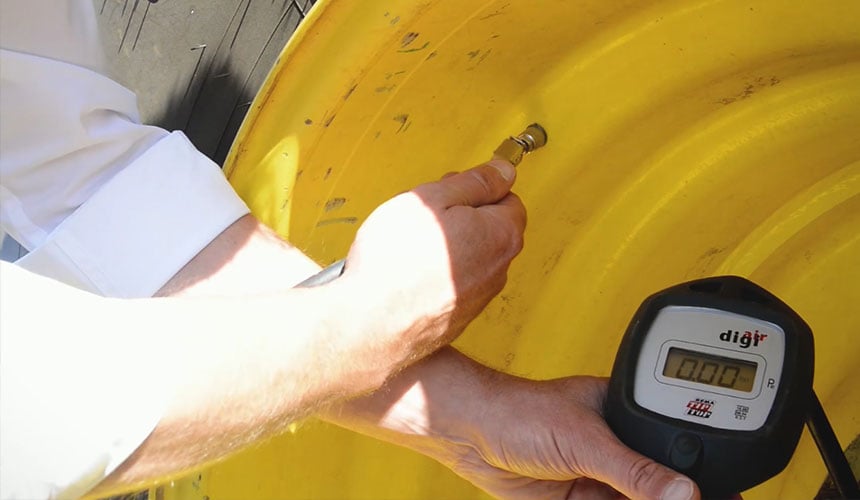Deformation in tractor tyres basically depends on two factors: the weight being hauled by the tractor, and the inflation pressure.
If your tyre has a higher pressure, it will be squeezed less but conversely will sink more into soft soil.
On the other hand, if the tyre has a low pressure, it will be squeezed more but this will increase its surface area in contact with the soil, thereby reducing soil compaction.
So how can you calculate the right pressure to get the best performance out of your tyres?
 To determine the right pressure to use for your agricultural tyres, you need to know the exact load on each axle. You will then know exactly how much weight is being placed on each tyre, and the optimal pressure to use to support this weight while ensuring minimal soil compaction.
To determine the right pressure to use for your agricultural tyres, you need to know the exact load on each axle. You will then know exactly how much weight is being placed on each tyre, and the optimal pressure to use to support this weight while ensuring minimal soil compaction.

If you don't have any weighing equipment, you can calculate the load on each axle to make sure you're using the right pressure and that your tyres are protected.
1 |
Your tractor's tare weight: read the manufacturer's information to find the front axle tare weight (FA tw) and the rear axle tare weight (RA tw). |
2 |
The weight of the rear-mounted tool M2 (manufacturer data). |
3 |
The front ballast weight M1 (or front-mounted tool, where applicable). |
1 |
The distance d1 between the centre-point of the front ballast weight (or centre-point of the front-mounted tool) and the centre of the front axle. |
2 |
The distance E between the centre of the front axle and the centre of the rear axle. |
3 |
The distance d2 between the centre of the rear axle and the centre-point of the rear-mounted tool. |

 This is certainly the most accurate technique if you own weighing equipment, because this will tell you the actual weight supported by each axle. After weighing, all you have to do is divide the weight by two to obtain the exact load on each tyre and then figure out (using the pressure equivalence table) the optimal pressure for the front and rear axles.
This is certainly the most accurate technique if you own weighing equipment, because this will tell you the actual weight supported by each axle. After weighing, all you have to do is divide the weight by two to obtain the exact load on each tyre and then figure out (using the pressure equivalence table) the optimal pressure for the front and rear axles.
REMEMBER that rear-mounted tools must be lowered when weighing the front axle and lifted when weighing the rear axle.
And if you regularly drive your tractor on roads, all you need to do is add 0.4 bar to the value in the pressure table to help prevent the rubber from wearing on the harder and more abrasive tarmac.
As with the manual calculation method, you will need to have all the weight data for your tractor and tools before you can use an online app.

This is the quickest solution, but it will only give you an estimated load and therefore a pressure close to the optimal value.
But as we all know, pressure adjustments are usually neglected because there simply isn't enough time, so this is a quick and easy way to help maintain your productivity. This is why some manufacturers, like Bridgestone and Firestone, offer easy-to-use apps available on tablets and smartphones so that you can work out the best pressure in just a few clicks:
To learn more and boost your farm's profits, Bridgestone Agriculture is offering you a free, detailed eBook that explains the essential role your agricultural tyres play in your productivity.
The most people who have read this article have also read the following articles, which are listed below in order of popularity:
This information is intended only to make you aware of the technical and functional aspects of agricultural tires and their use. It does not allow you to make a judgment or a definitive conclusion on a given problem. Only your agricultural tire expert is able to make a technical assessment and take a final decision, case by case.

BRIDGESTONE EUROPE NV/SA
AG Department
Leonardo Da Vincilaan 1
1930 Zaventem | Belgium
Our regional office:
Athena Drive, Tachbrook Park
Warwick CV34 6UX
United Kingdom